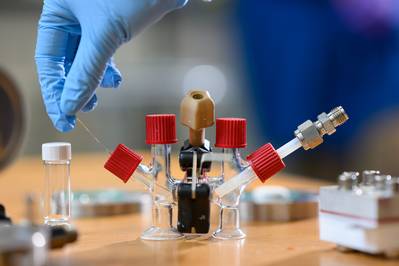Persevering with Hydrogen as a Maritime Fuel
Hydrogen fuel cell power plants for ships face the challenge of hydrogen’s low volumetric energy density at normal temperature and pressure and its low electricity-to-electricity energy conversion efficiency compared to batteries.
The justification for persevering with hydrogen as a marine fuel, though, is that other leading candidates for future fuels (such as e-methanol and e-ammonia) require a hydrogen feedstock for production. Therefore, hydrogen will always be less energy intensive to produce than these fuels.
Hydrogen fuel cells are often discredited as being too bulky for deepsea shipping, but researchers from the University of Southampton have shown that for the test case of an LNG carrier, the minimum viable setup for hydrogen was with liquid storage, a 105.6MW PEM fuel cell stack and 6.9MWh of batteries, resulting in a total system size of 8,934m3. That compared to 8,970m3 for an ammonia-based propulsion system and 6,033m3 for a methanol one.
The size of systems, and the vessels they are being installed on is gradually increasing. This week, eCap Marine reported that it will deliver hydrogen fuel cell power solutions to two short-sea container vessels being built for Samskip. The Samskip SeaShuttles are set to be the first shortsea container vessels in the world to use green hydrogen as fuel and will have 3.2MW PEM fuel cells installed.
More companies are entering the market, including Proteus Energy, headquartered in Singapore. The Proteus® Maritime Fuel Cell Solution can be delivered as a modular powerpack or customized and fitted into vessels. Benefits include: zero emissions, negligible noise and vibration, low maintenance cost due to few moving parts and no lubrication oil consumption.
They are faster to refuel than batteries, and Proteus notes that hydrogen fuel can be stored for long time periods without any loss whereas batteries lose energy even if not in use and need to be regularly recharged.
Proteus has calculated that green hydrogen, produced via electrolysis using renewable energy, is currently still more expensive than diesel, typically ranging from $4–$6 per kilogram. Meanwhile, blue hydrogen, made using carbon capture, ranges from $1.5-$4 per kilogram.
However, hydrogen is much more efficient. Diesel engines only convert about 35–40% of the energy in the fuel into useful work. Hydrogen fuel cells, on the other hand, can reach 50–60% efficiency. So, while hydrogen may cost more per unit, it might not cost more per trip. In many cases, depending on the route and vessel, it could even cost less, says Proteus, and if you factor in the penalties from regulations like the European Union’s FuelEU Maritime for emissions from diesel engines, the cost picture improves.
Hydrogen is not the only feedstock option. There are other fuel cell technologies using other fuels, and researchers at MIT have now come up with a new one that uses liquid sodium metal as feedstock. It’s an inexpensive and widely available commodity. The other side of the cell is just ordinary air, which serves as a source of oxygen atoms. In between, a layer of solid ceramic material serves as the electrolyte, allowing sodium ions to pass freely through, and a porous air-facing electrode helps the sodium to chemically react with oxygen and produce electricity.
In a series of experiments with a prototype device, the researchers demonstrated that this cell could carry more than three times as much energy per unit of weight as the lithium-ion batteries used in most electric vehicles today.
There would be no carbon dioxide emissions. Instead, the emissions, consisting of sodium oxide, would naturally form sodium bicarbonate (baking soda). If this ends up in the ocean, it could help to de-acidify the water, partly countering the damaging effects of greenhouse gases.
Members of the research team have already formed a company, Propel Aero, to develop the technology. MIT Professor Yet-Ming Chiang, said: “We expect people to think that this is a totally crazy idea. If they didn’t, I’d be a bit disappointed, because if people don’t think something is totally crazy at first, it probably isn’t going to be that revolutionary.”
















